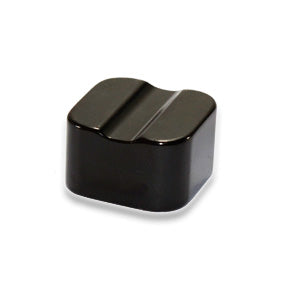Neodymium Block Magnet - 20mm x 20mm x 12mm | Epoxy Coating | N42H with Mid Groove | High Temp 120 deg
Product code: 22016

Prices are GST Incl.
Volume pricing available on requestAustralia's Leading Supplier
Shipping Worldwide*
30 Day Returns
Same Day Dispatch*
Neodymium Block Magnet - 20mm x 20mm x 12mm | Epoxy Coating | N42H with Mid Groove | High Temp 120 deg

Magnetic Product Description:
This magnet has a length and width of 20mm and a height of 12mm. It has an 12mm groove which is 1mm deep. It has a magnetic flux of 4606 Gauss and a pull force of 16.5kg. It uses AMF magnet part number 22016.
Uses for our Rare Earth block magnets:
To join anything to anything else is a compromise or a transaction. Fabrications usually separate at the joint. Like all compromises and transactions, costs apply. The very first joining task, attaching sharpened stone fragments to the end of wooden spears, came with significant compromises or transaction costs.
The spears took longer to make and were heavier, you carried fewer of them. Heavier to throw, the hunter would have to get even closer to prey increasing the risk of flight or fight. If the stone tip uncoupled for any reason, a blunt timber rod remained. Useless for the rest of the hunt or against counter attack from injured prey. These transactional costs were paid in the hope stone tipped spears would result in better hunting.
The youngest members of the fastening family, magnets, are outperforming traditional fasteners like bolts, screws, rivets, nails and glues. The reasons are many. However, the main reason magnets will be soon crowned the master fasteners of the new world can be explained by one simple word. Plastics.
Plastics of all kinds, manufactured in all kinds of ways, including 3D printing, are proliferating in all industries, all across the world. The transaction costs or compromises of penetrative or adhesive fixing for plastic fabrications are too high. To fasten with magnetic bond however imposes no penalties. Secured with magnetic tape or placed into socket pockets of plastic fabrications (tools, toys and television news desks) for renewable, instinctive and intuitive release, magnets master the new paradigm.
Regularly used by the education sector and specialist design firms. A good all-purpose magnet with multiple applications.
No FAQ available

NB: Ranges are indicative for product category, please check individual products for specic values within that range.



The most common coating for Neodymium magnets is Nickel + Copper + Nickel (Ni + Cu + Ni). This coating offers the magnet relatively good protection from corrosion and passive applications. If the magnet will be exposed to moisture or liquid then consider the use of an organic coating such as Epoxy. A hard wearing coating, Epoxy is suited to applications where the magnet will come under some friction or knocking.

Magnets are readily available in Blocks, Discs, Cylinders & Rings. AMF Magnetics specializes in the supply of short-run prototype magnets including Arc Segments, various magnetic orientations etc. If you need a magnet size that we don't carry in stock, submit a Design-a-Magnet enquiry for a quote on your custom magnet design.

Neodymium magnets are offered in several different grades. The first section N30-54 has an operating temperature of up to 80 degrees. Most of our stock only goes up to N38. The second section, denoted with the "M" prefix after the grade has an operating temperature 100 degrees. After this the grades are "H", "SH", "UH" & "EH". In order for the magnet to withstand a higher operating temperature, during production more of the raw material PrNd is incorporated as these elements have a naturally occurring resistance to high temperatures.






